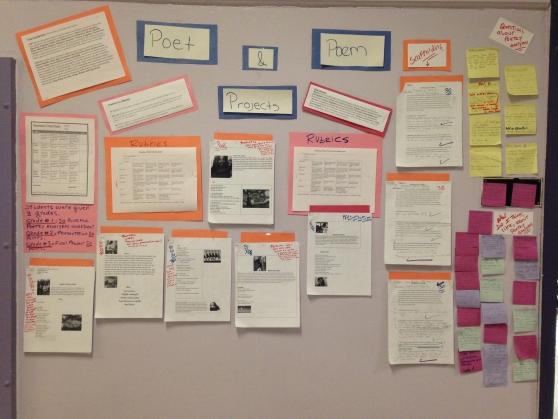
Students can learn to value their own voices by writing about their lived experiences.
We grow up learning that books are important because of the life lessons we absorb from them. But what about the lessons we can learn from our own family stories? What a marvelous feeling it would be for most of us to find a book, a diary or even a sheet of loose-leaf paper with a poem written by one of our great-great-grandparents. We would be able to know more about our ancestors’ feelings, thoughts and lives.
As a high school English teacher and poet, I have made it my mission since my first year of teaching to have my students record their own lives through writing. I want them to value their own voices and know that their experiences and life lessons are just as important as the ones we read about in books.
To hook my students on writing, I had to make it part of our curriculum. I don’t give traditional homework unless it’s absolutely necessary. Instead, I give my students a 4-by-6-inch notebook, which we call a “journal.” Journals are due once a week for the same credit as homework. In their journals, students can write about anything they want: something they learned in class, a movie they watched, stories from their weekend or vacations. Every Friday, one student may volunteer to read an excerpt from their journal for extra credit.
For some of our students, this journal writing may be their first engagement with free writing. Some even find their passion for writing this way. Some of my students have become so engaged in their writing over the years that they started their own novels and came after school to edit their work with me.
Another way students can express their voices is through poetry and narrative story writing. I start my first unit with poetry reading and analysis. I use TPCASTT (title, paraphrase, connotation, attitude, shifts, title, theme) as a strategy for poetry analysis — a strategy students will later use to write their own poems. I start by teaching five literary devices that the students have to look for when reading a poem they choose based on their reading level. They can analyze the poem by themselves or in a group.
Students then write their own poem using three out of the five literary devices learned in class. While writing their poems, the students use the writing process: pre-write using TPCASTT, draft, peer revision using a rubric with grow-and-glow feedback, edit, publish and share with the class. Students then use shout-out notes (notes can be anonymous) to give final feedback to their peers on their poems.
All poems are then published as a book (when possible). Organizations like Vivid Voice Endeavor, Student Press Initiative and Writopia Lab can help publish your students’ work in book form. The poems are also posted on a bulletin board outside our classroom to share with our school community. Each student also writes a short biography to go with their poem.
As a final debrief, we have a reflective circle where students share what they learned from writing their own poems versus analyzing someone else’s poem. They write a final reflection after the circle. Those reflections also are displayed on the bulletin board as part of our project presentation.
I want my students to know their stories don’t have to be confined to their hearts. My goal is for my students’ stories to live on long after they have walked the earth, just like the famous writers we read.
As teachers, it’s important to keep in mind that our students are talented and creative. They have a voice that has the potential to echo through generations.
Brynda Grube is an 11th-grade ELA teacher at the Academy of Innovative Technology in Brooklyn.